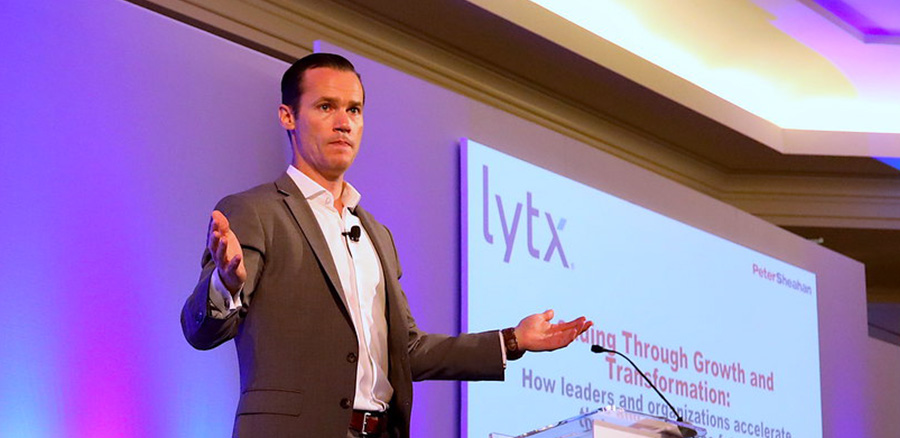Leadership Lessons: Transforming from Awareness to Ownership

“If the rate of change outside of your team or organization is faster than the rate of change inside, then you’re becoming less relevant.” In his keynote speech at the 2019 Lytx User Group Conference, titled “Leading Through Growth and Transformation,” Peter Sheahan, CEO of Karrikins Group, presented an engaging picture of how good leaders shift from awareness to ownership in order to “grow fast enough to take all that change, take all that opportunity, and turn it into some kind of an advantage.”
The secret to harnessing change to your advantage, Sheahan argued, is realizing that companies don’t transform. People do. That means each person has the opportunity to make an impact by leading their organizations through change. In this article, we summarize his top points about how you can transform from being aware of and reacting to your business, into owning and leading it.
It all starts with honesty.
Take an honest look at your industry and company
Good leaders are willing to tell the truth about what's happening within their business and how the industry is evolving. This is no easy task, but finding opportunity and driving change requires openness and a willingness to learn. Strong leaders take a clear-eyed view of their business and face up to hard facts about the market and competitors.
The transportation industry is undoubtedly going through rapid change and the rate of change is only speeding up. An honest look by business leaders in this space might reveal labor supply challenges, weak analytics, supply chain gaps, disparate technology systems, or compliance issues.
Being open to change can help reveal opportunities to drive business value and anticipate what’s next, rather than reacting to what’s now. It’s an awareness of the situation and the will to act on it (ownership).
Whether it’s safety programs or last-mile logistics, taking an unfiltered view of reality and being honest about your observations can help both grow and protect your business.
Operate from possibility not experience
Use your experience, but don’t bring your baggage. We’re all at risk of allowing our past histories define what we think is possible in the future. But, be careful not to shoehorn your legacy belief systems into your grand plans.
Leaders who take ownership operate from a mindset of possibility and don’t fully rely on their experience to guide their decisions. Use your imagination and ambition to explore what’s possible. What can you do in the next five years that you couldn’t do 10 years ago? What organizational changes do you think could help future proof your company and its offerings?
As Sheahan said, “When the future meets the past, the future wins six days a week and twice on a Sunday.”
Beware of wrong assumptions
As a leader, you may be making every effort to take ownership, but if your assumptions about the business, market, or future are wrong, it’s all for naught. More specifically, if you have a lot of data but don’t understand how to make sense of it, you won’t be able to get the insights you need. It doesn’t matter how well you execute the wrong strategy.
Data inputs can come from your industry, your business, and your technology. Decisions that are backed by reliable data can help you get a clear, 360-degree view of your business and market. And when it comes to leveraging data, Sheahan advised going with a partner that has the breadth and depth to deliver analytics that have the power to truly move the needle. “Scale is the magic formula is the world of Big Data,” he said. “You want to play with the big boys.” As a leader it’s up to you to look for early signs of change in your analytics and then lead with it.
“We can't just take ownership and tell ourselves the truth,” Sheahan aptly noted. “We have to tell ourselves the truth about what's possible.”
Final thoughts
Throughout his talk, Sheahan reinforced the following:
-
Change is slow, until it's not. Many of the changes in our industries start slowly, progressing over years and escaping our notice until the day it gathers enough momentum to appear unstoppable. Begin the process of learning early — before the market makes you learn.
-
Put constructive tension on your team. The best time to prepare for change is when things are going well within your organization. Sheahan relates a story about Jeff Bezos of Amazon, who was asked how his company decides which industry to disrupt next. Bezos replied, “We ask, ‘Where is the customer going?’ and ‘How do we beat them there?’”
Leaders who successfully move from awareness to ownership will have a particularly big impact on their organization. Take an honest look and tell yourself the truth about what's happening and think big about how you can be prepared to lead through change.
Want to read more leadership tips? Check out this article on The Interplay Between Leadership and Technology.
